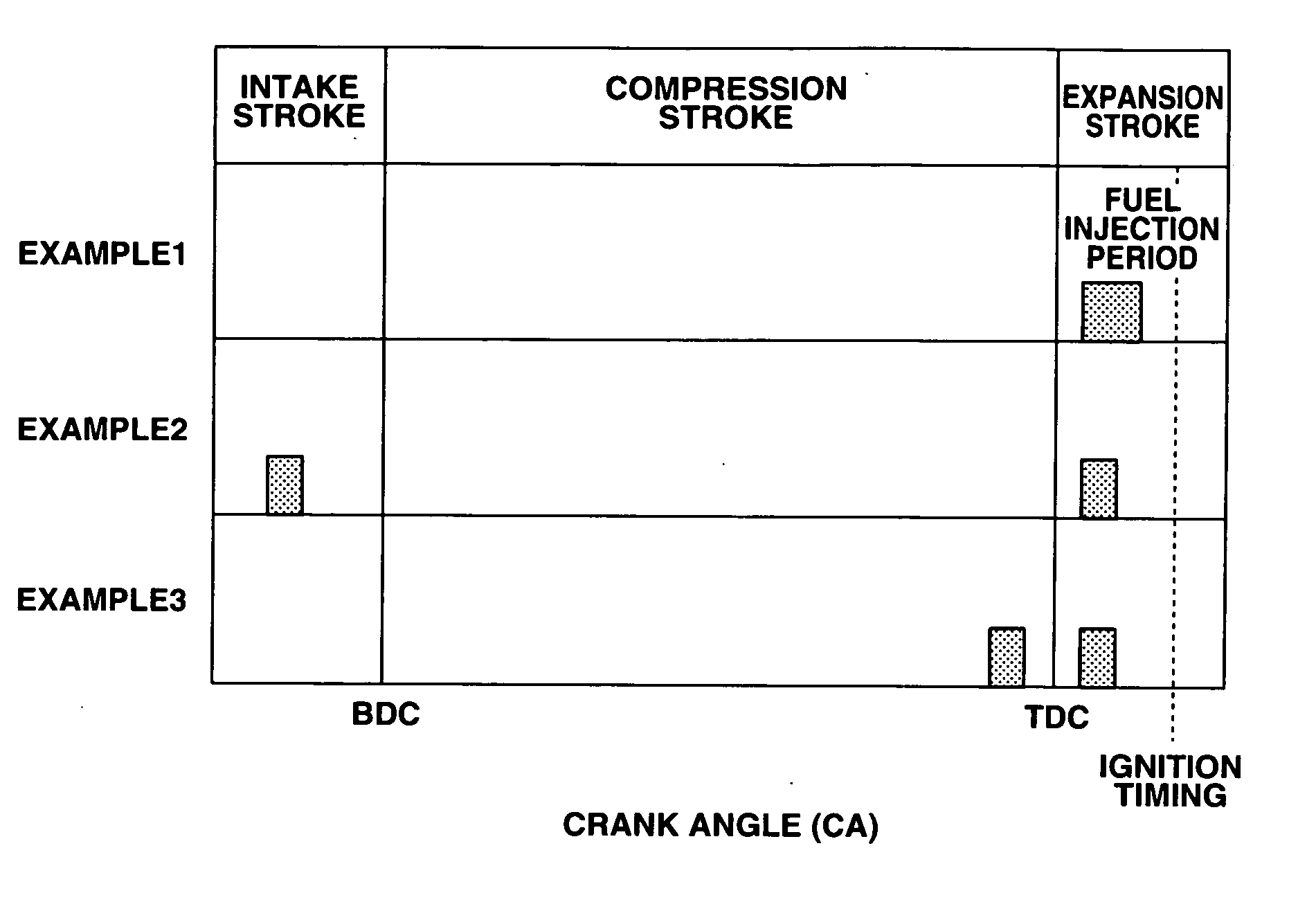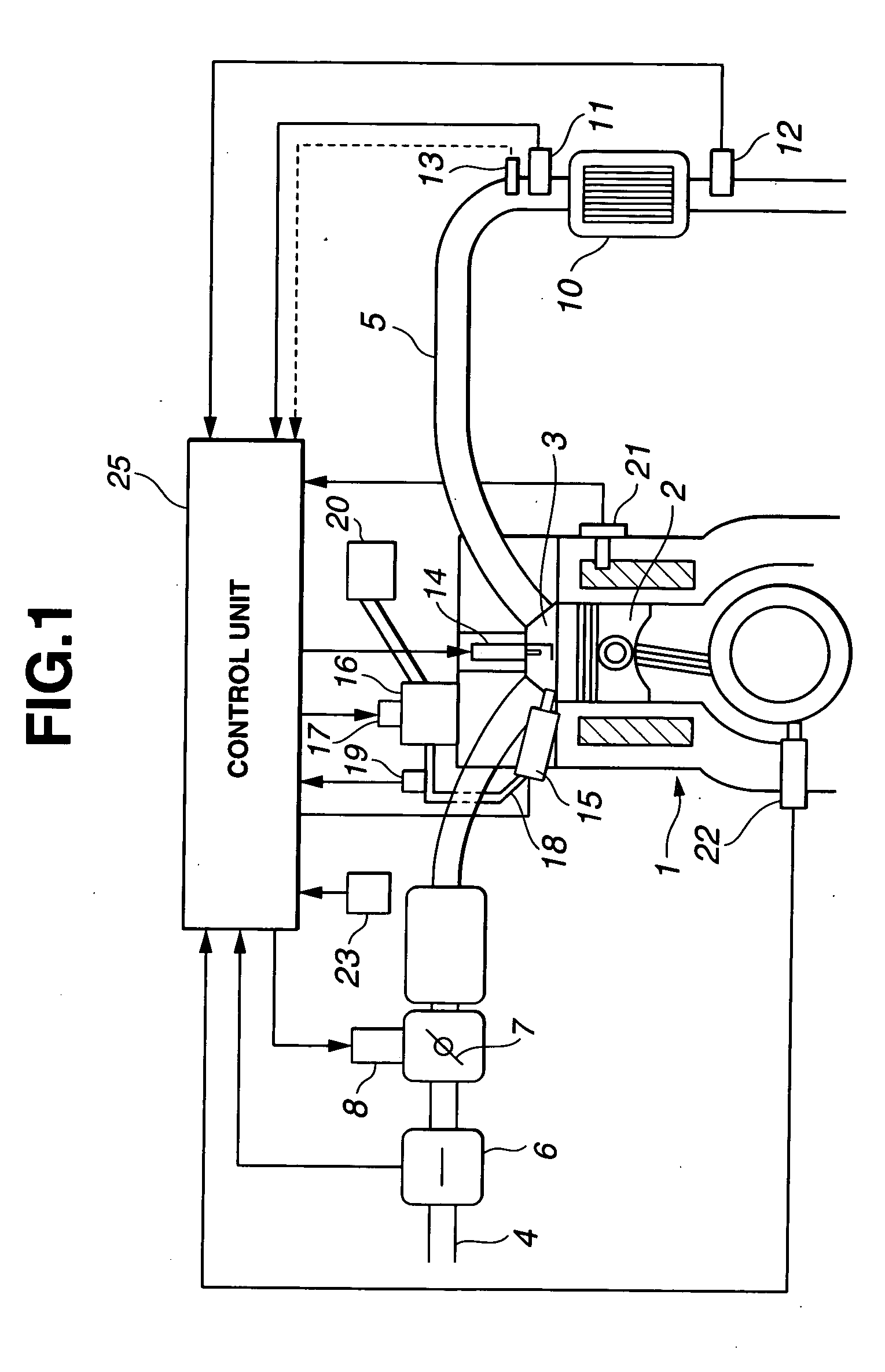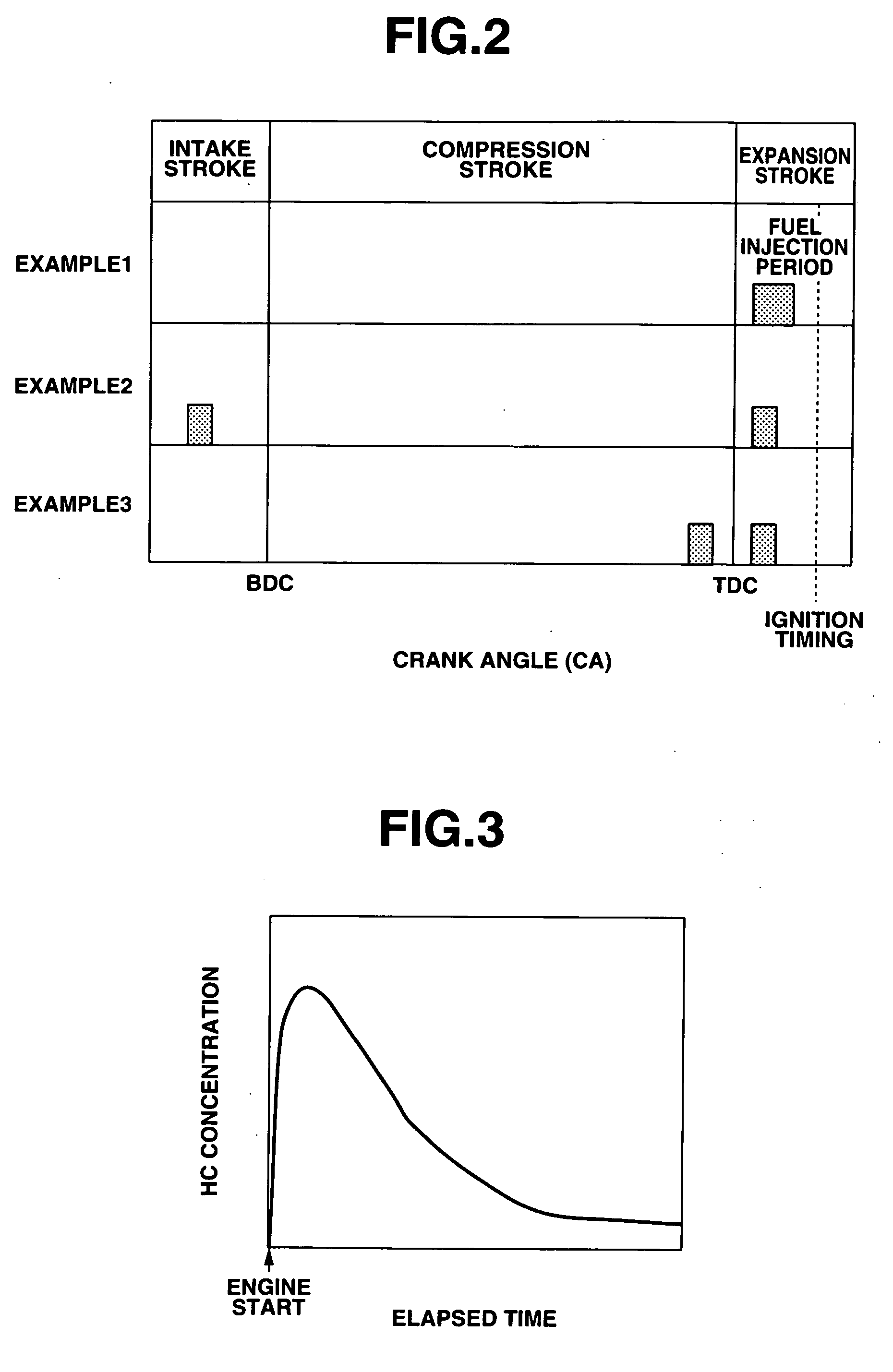Combustion control system and method for direct-injection spark-ignition internal combustion engine
- Summary
- Abstract
- Description
- Claims
- Application Information
AI Technical Summary
Benefits of technology
Problems solved by technology
Method used
Image
Examples
first embodiment
[0027] The first embodiment will be now explained below with reference to FIGS. 1 to 3, 4A, 4B and 5 to 8.
[0028] The first embodiment specifically refers to a combustion control system for direct-injection spark-ignition internal combustion engine 1 in which combustion chamber 3 of each engine cylinder is defined by piston 2 and connected with intake and exhaust passages 4 and 5 via intake and exhaust valves, respectively, as shown in FIG. 1. Engine 1 is herein provided with electronically controlled throttle valve 7, actuator 8, catalytic converter 10, spark plug 14, fuel injection valve 15, high-pressure fuel pump 16, pressure regulator valve 17, low-pressure fuel pump 20, control unit 25 and various detection units.
[0029] Throttle valve 7 is disposed in intake passage 4 and opened by actuator 8 to control a negative pressure in intake passage 4 under a control signal from control unit 25.
[0030] Fuel injection valve 15 is arranged on the intake side of combustion chamber 3 and o...
second embodiment
[0049] Next, the second embodiment will be explained below with reference to FIGS. 9A and 9B.
[0050] The second embodiment is similar to the first embodiment, except for the setting of the injection-to-ignition time interval T under the combustion retard control.
[0051] In the second embodiment, the injection-to-ignition time interval T is adjusted by shifting both of the fuel injection timing and the ignition timing as shown in FIGS. 9A and 9B. The injection-to-ignition time interval T reaches a minimum value Ta when the fuel injection timing and the ignition timing are most retarded within their respective ranges of the combustion retard control as shown in FIG. 9A and reaches the maximum value Tb when the fuel injection timing and the ignition timing are most advanced within their respective ranges of the combustion retard control as shown in FIG. 9B. The injection-to-ignition time interval T varies between the minimum value Ta and the maximum value Tb continuously and linearly wi...
third embodiment
[0052] Finally, the third embodiment will be explained below with reference to FIGS. 10A to 10C, 11A to 11C and 12.
[0053] The third embodiment is similar to the first and second embodiments, except that the fuel injection is performed in two steps: intake- or compression-stroke injection and expansion-stroke injection as in Examples 2 and 3 by varying the ratio R of the amount of fuel injected at the expansion-stroke injection to the total amount of fuel injected at the intake- or compression-stroke and the expansion-stroke injection (hereinafter referred to as “expansion-stroke injection rate”) under the combustion retard control.
[0054] In the case of split fuel injection, the time from the later injection step to the spark ignition (the time for vaporization of fuel injected at the later injection step) is especially short. There thus arise an increase in the amount of unburned hydrocarbons and smoke in the exhaust gas due to insufficient fuel vaporization during a short time (e....
PUM
 Login to View More
Login to View More Abstract
Description
Claims
Application Information
 Login to View More
Login to View More - R&D
- Intellectual Property
- Life Sciences
- Materials
- Tech Scout
- Unparalleled Data Quality
- Higher Quality Content
- 60% Fewer Hallucinations
Browse by: Latest US Patents, China's latest patents, Technical Efficacy Thesaurus, Application Domain, Technology Topic, Popular Technical Reports.
© 2025 PatSnap. All rights reserved.Legal|Privacy policy|Modern Slavery Act Transparency Statement|Sitemap|About US| Contact US: help@patsnap.com



